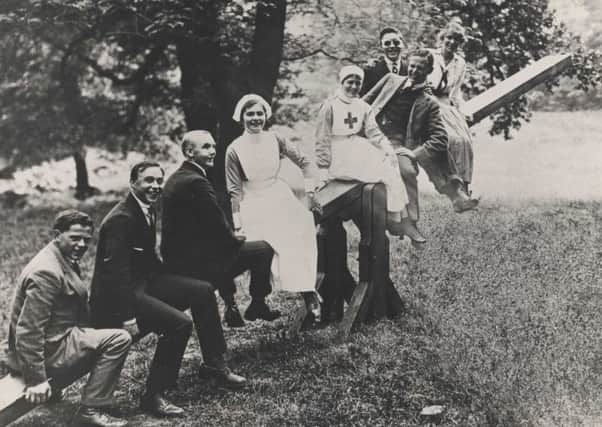WWI changed Edinburgh's attitude to blindness


Mustard gas too would leave hundreds without full sight, and when the Great War ended they returned home to face a new life in a society which had long thought the blind could not lead happy or useful lives.
But in Edinburgh, as a one-off BBC documentary shows tonight, the war blind were not consigned to the fringes of society but were encouraged to work and live independently.
Advertisement
Hide AdAdvertisement
Hide AdIn the programme, blind journalist Ian Hamilton examines how the First World War changed the lives of blind people in Britain forever.
He tells the story of the development in services for blind people, including the St Dunstan’s charity in London, talking books, guide dogs and the establishment of the Scottish War Blinded charity in Edinburgh.
“As a journalist and blind person, I’ve experienced massive changes in technology in the past two decades,” says Mr Hamilton. “But the biggest shift in attitudes happened 100 years ago. Out of the horror and carnage of the First World War came advances that revolutionised the ways in which blind people lived and worked.
“From guide dogs to talking books and new skills for personal independence, these pioneers left a legacy that is still with us today.”
Advertisement
Hide AdAdvertisement
Hide AdExploring just why so many came home with terrible injuries to their eyes, Mr Hamilton speaks to Edinburgh University’s Dr Yvonne McEwan of the Centre for the Study of Two World Wars.
“Because it was a highly mechanised new type of industrial warfare, a lot of men had impaled injuries to their face, facial trauma which involved the eye, wooden splinters to shells to human bone which penetrated men’s faces, heads and bodies,” she says. “There was basic medical intervention. They would try to irrigate eyes, compression bandages, then be moved to a base hospital until they decided if you could return to duty or be sent to Britain for longer-term treatment.”
Mr Hamilton discovers that before the war, 80 per cent of blind people were not considered part of mainstream society. While there were blind institutions which helped the visually impaired work to make ropes, cane baskets or mattresses, career choices were very limited. There were even attitudes which suggested that blind people should not be allowed to marry and have children.
“These attitudes would change dramatically with thousands of soldiers returning from the front,” says Hamilton.
Advertisement
Hide AdAdvertisement
Hide AdIn 1915 Scottish War Blinded (SWB) was established at Newington House where blind veterans could be rehabilitated and receive training towards new jobs, including learning to read Braille, type, piano tuning and even poultry farming. When they left, a £150 grant was provided to help them set up their own businesses.
Then in 1943 the SWB bought Linburn House in Wilkieston, West Lothian, to support blind veterans returning from the Second World War.
Hamilton visits Linburn to speak to those who still benefit from its services.
Richard Hellewell, chief executive of SWB, says: “It was all about finding a way that service people with injuries could make a living and have pride in being a member of the community, to get them back on the rails again after believing there was no future for them.”
• War Blinded: The Dark Way Home is on tonight on BBC2 Scotland at 7pm.